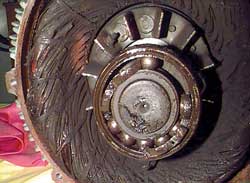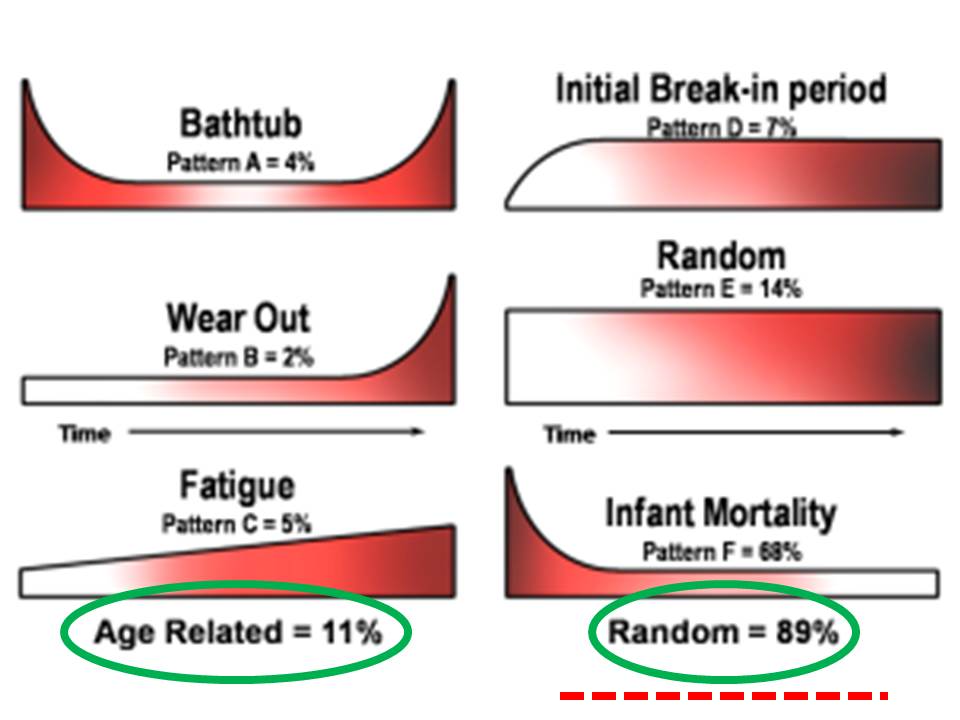Welcome to Sino Bearings web
24x7 HOTLINE:+86-28-81454188

 TECHNOLOGY
TECHNOLOGY“PM Procedures are not Built to Stand Alone – Without Effective Replacement / Restoration Procedures Failures will Continue”

“Compliments of Noria Corporation”
In the field of maintenance the traditional approach has been to rely upon the intuitive knowledge and skill of the crafts-persons who conduct it. There is a great deal of pride of workmanship and, in all too many organizations, a great deal of psychic income in addition to significant overtime pay for successful emergency repairs to return equipment to operation after unplanned shutdowns.
“There is a mystique that accompanies all of this that many skilled crafts-person would like management to believe firmly. That is that there are too many variables in maintenance, making compliance with written procedures impossible and impractical; that the “way we’ve always done it” is the best and only way to conduct maintenance”
This idea spills over into preventive maintenance, also. Crafts- persons believe that their own intuitive knowledge is preferable to a written procedure and/or a thoroughly defined checklist. Aside from these problems, most organizations have allocated no resources to creation and on-going support of procedures and checklists. Accordingly these organization are beating on the wrong way of conducting maintenance in order to assure reliability. This results in at least a lost opportunity for increased profits from existing assets and at worst a fatal management omission. Management is gambling with profits and losing big time with the approach that emphasizes “pride” of workmanship over an approach that has been proven to work.
Lost in all of this is the concept of ensuring and sustaining reliability as both corrective and preventive maintenance is performed. Ideas about how things fail that we used to rely upon as a basis for preventive maintenance have been shown in the four failure profile studies over the past 40 years to apply to only a minor percentage of failures. In gambling terms, this means that odds are very long against a “win.” From this it can be shown that time directed maintenance, in general, also should apply to only a minor portion of the failure modes which an organization must correct or mitigate. This is because we seldom know the profile for a failure and assume that most components exhibit a “wear-out” characteristic, but assign a frequency for maintenance anyway, as if they did.

Nowlan and Heap Study – Most Failures are Random
Further it can be shown that intrusive, time directed maintenance can be detrimental to reliability because humans are involved and they produce “infant failures.” Non- intrusive maintenance and monitoring tasks should be sought, instead. Indeed, because of the distribution of the failure profiles described in this paper, the only logical approach for the mitigating failures in the majority of equipment is through the use of non-intrusive tasks supported by the use of procedures to assure consistent results.
“ As modern predictive maintenance tools and analysis methods have come into use, most of which are non-intrusive, the requirement for procedure-based maintenance becomes even more important”
Analysis of data from modern tools such as vibration monitoring, lubricant and wear particle techniques, infra red observations, motor electrical condition monitoring and almost all other technologies depends for accuracy upon knowledge of the operating state of the equipment. Operating conditions and surrounding environmental parameters must be carefully established and recorded in order that thorough analysis can be performed. This can only be established by adherence to carefully written, detailed procedures and checklists. Such procedures may be “imbedded” into equipment designed for data collection. However, procedures for connecting data must be carefully prepared and followed in order that there is complete agreement between imbedded and non-imbedded details.
“Should Repeatable and Effective Procedures be the standard for most Maintenance organizations or should we keep doing what we are doing and expecting a different result”
I know many organizations spend a lot of money, time, and energy to develop “Failure Mode Focused PM Procedures” and yet spend little or no focus on the corrective procedures which must be applied to correct any deficiencies or abnormalities (corrected to known specification or standard) identified through PM Inspection or Condition Monitoring Inspection. If this does not occur we know frequent failures will occur.
Imagine the outcome of a Procedure Based Maintenance Organization where frequent and unexpected failures become a thing of the past. Your equipment would have a better chance of running failure free for a longer period of time through Procedure Based Maintenance. We apply Preventive Maintenance, Predictive Maintenance, let’s add Procedure Based Maintenance and make it a standard we must follow.
It is time to change!
Contact
Ricky Smith
Principal Advisor – Maintenance/Reliability
GPAllied.com
KMK BEARINGS